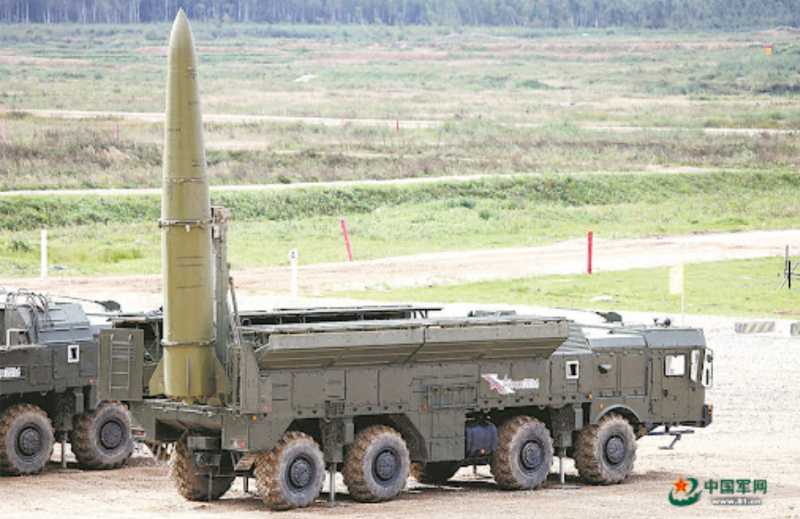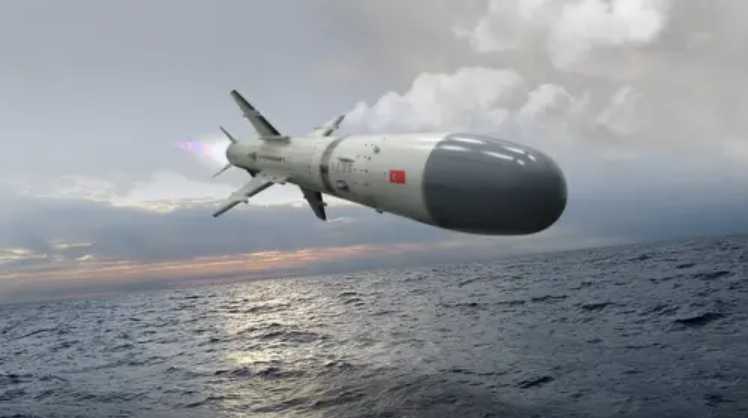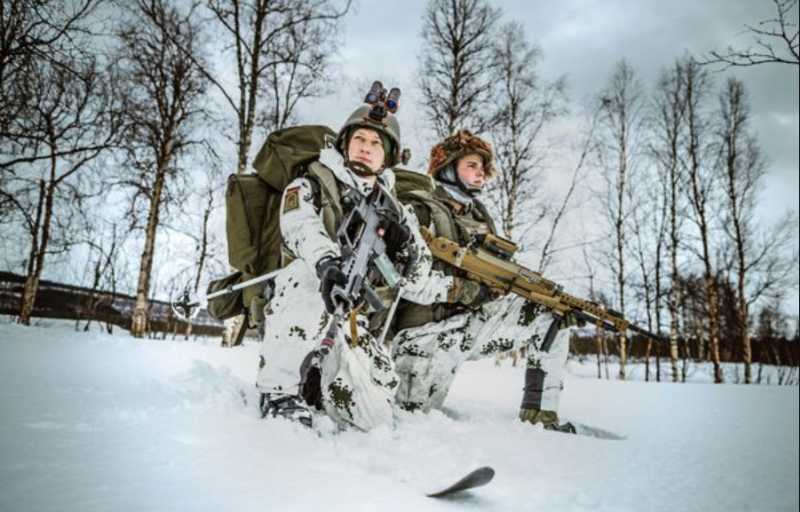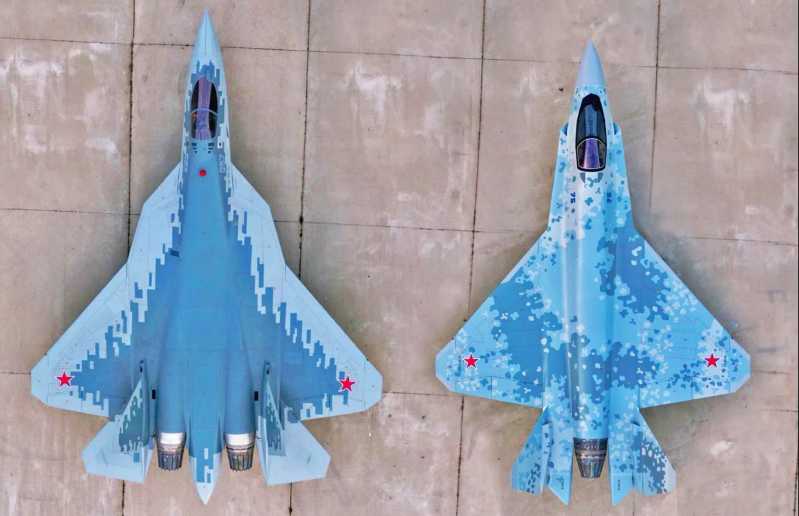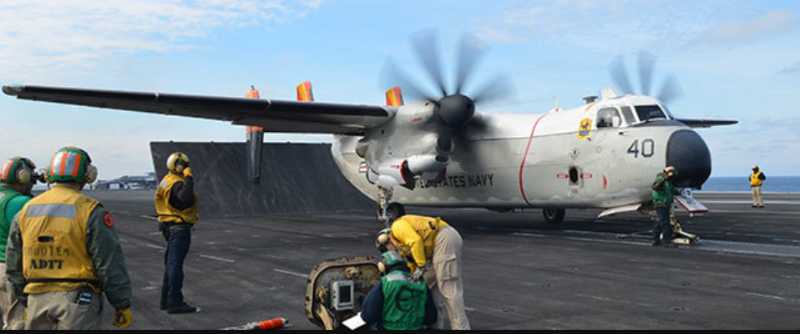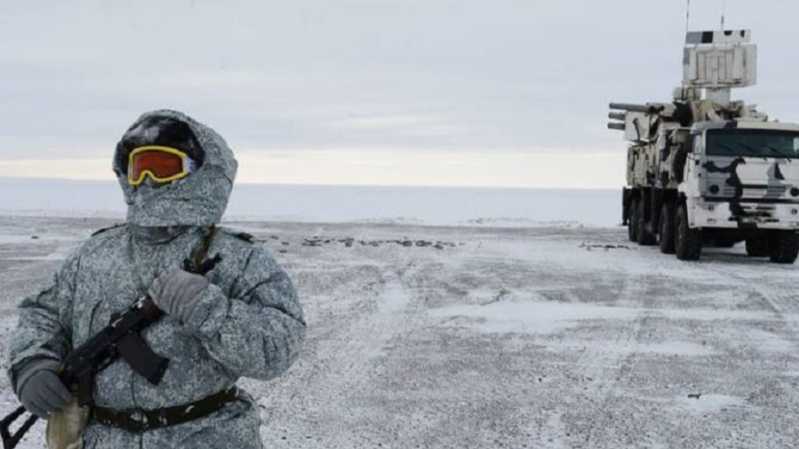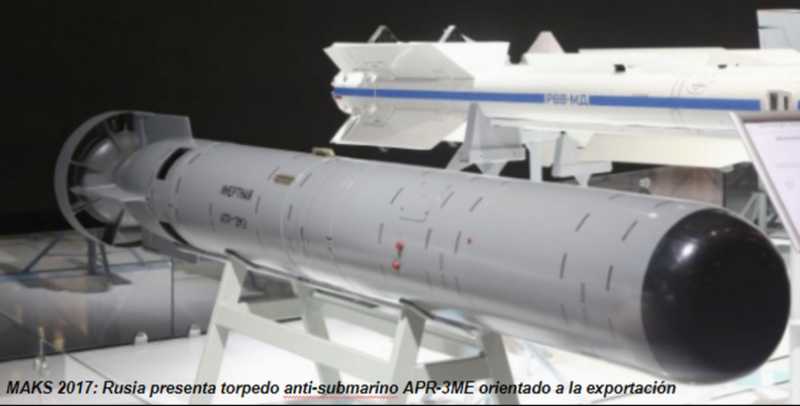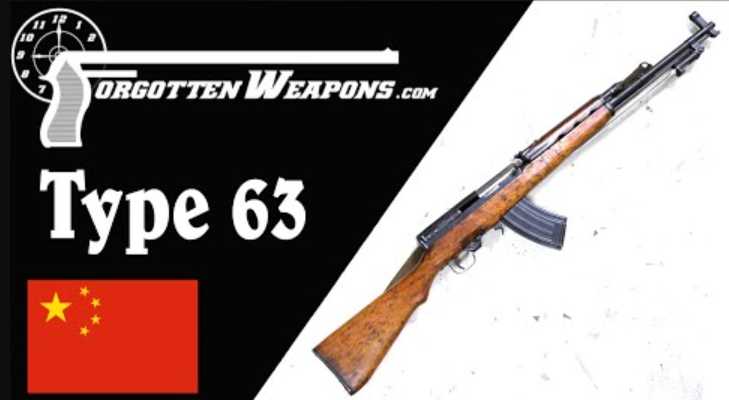On November 10, 2023, the official account of the Political Work Department of the 71st Army Group of the Army, "Liangjian Southeast", published an article titled "A Brigade of the 71st Army Group: Military Exercises in the Desert, Swords Tempered in Fire". The accompanying picture in the article shows that this unit stationed in the desert Gobi launched a new type of large-caliber ammunition with a wingless aerodynamic layout in a live-fire exercise. It is not difficult to see that this new type of ammunition is significantly different from the previously announced multi-type guided rockets in many aspects. Therefore, although the institutes, manufacturers or troops may classify this new type of ammunition as a guided rocket for various reasons, the author believes that this new type of ammunition can actually be classified as a short-range ballistic missile. Therefore, the following text will refer to this type of new domestic ammunition with an unknown code name as a new type of campaign tactical missile.
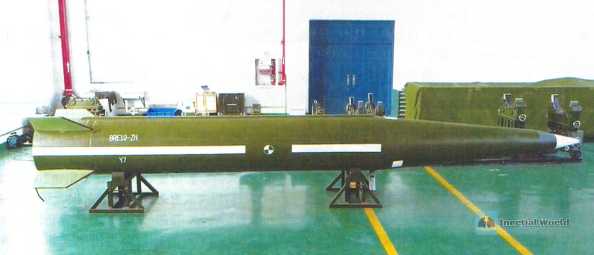
Appearance analysis
From the pictures released by the official WeChat account of "Liangjian Southeast", it can be seen that the new campaign tactical missile adopts a wingless layout and is painted dark as a whole. Only the front end of the warhead is white. This may be a radome or optical window made of composite materials, which means that on the basis of basic inertial guidance and satellite guidance, radar or optical terminal guidance may be added to improve the strike accuracy. The hit accuracy should not be lower than that of similar missiles of the Rocket Force. The various features of the new missile are similar to the "Huolong" 480 guided rocket first launched by China North Industries Group at the 2018 Zhuhai Air Show. There may be a reference relationship between the two in terms of aerodynamic layout, which also makes China North Industries Group considered by foreign media and foreign experts as the manufacturer of the new missile.
Compared with similar missiles of the Rocket Force, the new missile can also be launched in all weather, all regions and without support, relying on its foundation of launching missiles and rockets on a certain type of long-range box rocket launcher, but with lower procurement cost, simpler use and maintenance, faster response speed and higher operational flexibility, providing a powerful supplement to our army’s conventional missile assault capability.
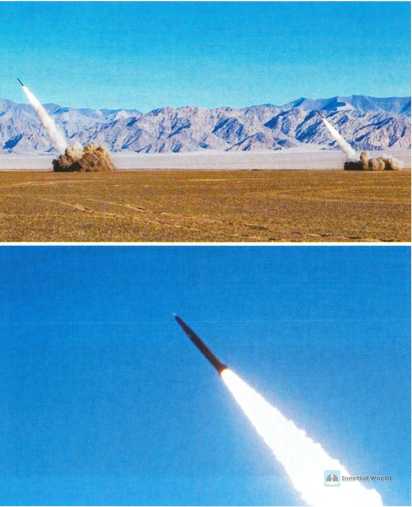
Range inference
From official public reports, it can be learned that the new missile is launched by a certain long-range box rocket launcher. Combined with the total mass of a certain transport box with missiles of 6.56 tons, it is inferred that the new missile may be a 4-ton missile similar to the M20. The author tries to compare it with some commonly used caliber rockets and M20 missiles, and then roughly infers its maximum range based on the reconnaissance capabilities of relevant units.
First, we can learn from public data that the range of some commonly used caliber rockets after gliding and range extension in the test is close to or reaches 500 kilometers. Based on this, it is speculated that the range of new missiles with larger caliber and more advanced technology should not be less than 500 kilometers. Coincidentally, Wang Tanshen, a first-class sergeant of an artillery brigade of the 72nd Army, pointed out in an interview with CCTV: "Our equipment has changed from long-range multiple rocket launchers to the current new rocket launchers. The strike range is seven times that of the previous ones. It can be said that the battlefield firepower coverage is seamlessly connected." Even if the data of the old models of commonly used ammunition is used for conservative estimation, the strike range of the new rocket launcher, which is seven times higher than the old models, has reached about 500 kilometers. If the data of the old models of extended-range ammunition are used for estimation, the strike range of the new rocket launcher is even farther, and such data is obviously not what the commonly used caliber rockets can achieve under normal circumstances. Based on this, the author speculates that the brigade may also be equipped with new missiles, which is also consistent with the speculation that the range of the new missiles is not less than 500 kilometers.
Let’s take the M20 tactical missile, which is of similar quality to the new missile, as an example for speculation. The M20 is a short-range ballistic missile for export that can perform hypersonic maneuvering flight throughout the atmosphere, designed by the Tactical Weapons Division of the First Academy of Aerospace Science and Technology. It can perform longitudinal maneuvers, lateral C-type, lateral S-type and other maneuvering flights. The range of 100~280 kilometers marked on its display board is not its technical range parameter, but is limited in range to comply with international conventions and my country’s "Export Control List of Missiles and Related Items and Technologies", requiring it to be no more than 300 kilometers. The author tried to make a rough estimate of the actual maximum range of the M20 under ideal conditions through public data. According to the shutdown speed of 2300 m/s and the shutdown mass of 1.4 tons provided in the article "Research on Online Identification and Guidance Method of Aerodynamic Parameters of Tactical Missile Glide Phase", combined with the specific impulse of 2520 m/s of its HTPB+AP propellant, its ideal shutdown speed can be calculated by the Tsiolkovsky formula to be about 2646 m/s. Dividing it by the empirical coefficient of atmospheric drag of 1.175, the approximate actual shutdown speed is about 22 52 meters/second, which corresponds to a minimum energy ballistic range of more than 600 kilometers. Its boost-glide ballistic range can be calculated as more than 800 kilometers based on a set of lift-to-drag ratio data of its double-cone warhead at a certain angle of attack. Compared with the M20, which conducted live-fire flight tests as early as 2009, the design and manufacturing time of new missiles of similar quality is relatively later. Relevant institutes and manufacturers have more abundant technical accumulation in the development of ballistic missiles during this period. Based on this, it is speculated that the maximum range of the new missile is likely to be no less than about 800 kilometers of the M20.
In addition, the various types of drones equipped by the direct brigades and group army aviation brigades in the theater have a combat radius of more than 1,000 kilometers. Such reconnaissance capabilities must be matched with firepower strike capabilities to play a better role. Combining the above, the author believes that the maximum range of the new missile is about 800~1,000 kilometers
Significance of deployment
The deployment of new missiles means that the Army has regained conventional missile combat capabilities since it transferred its missile brigades to the Second Artillery Corps around 2010. One of the reasons for the Army’s transfer of short-range conventional missile forces was that the supporting "reconnaissance, control, attack, assessment, and protection" forces were insufficient, and it was difficult to The army has made good use of the Dongfeng-11 equipped with a range of 300 kilometers. Now, with the new intelligence reconnaissance systems including the Ruiying FX500, Ruiying FX700, Rainbow-4 and other UAV platforms, the army has a longer reconnaissance depth. In addition, the use of new command and control systems, information interconnection systems, information attack and defense systems, firepower strike systems, force assault systems and comprehensive support systems has provided effective support for the new army combat system. The current army has initially possessed a good foundation for independent use of 1,000-kilometer-level firepower. With the support of the joint combat system of various services, it can give full play to the firepower advantage. Such progress is likely to promote the adjustment of the division of labor among the services. This can be seen from the increasing size of the new land-based missiles exhibited by China North Industries Group Corporation at the Zhuhai Air Show in recent years. The group is a counterpart military industry department that provides weapons and equipment for the Chinese Army.
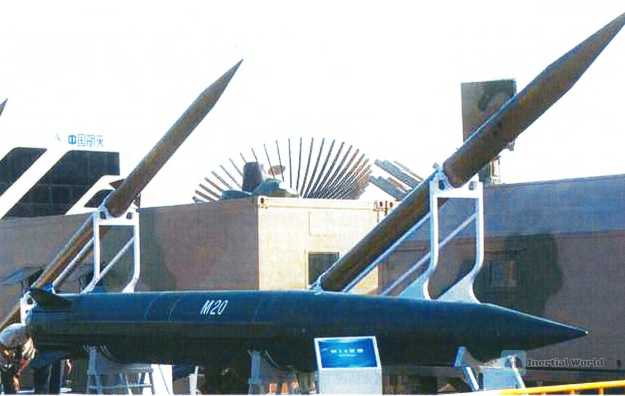
It is worth mentioning that, due to the urgent need for military struggle preparation, although a considerable number of the DF-11 and DF-15 series of short-range ballistic missiles in the Rocket Force inventory have reached or are close to their storage period at the beginning of their design, the technicians have extended their service life for many rounds, so that these missiles stored and maintained under the specified conditions can still reach the tactical and technical indicators at the time of design with a high probability, and continue to exist as a mature and usable powerful combat force. The army’s troops equipped with new missiles will take a long time to form a system of combat capabilities and support capabilities, and there is still a big gap compared to the huge scale of the Rocket Force’s conventional missile forces. Therefore, the adjustment of the division of labor between the services should be a long-term process. Although the Rocket Force may transfer a considerable part of its short-range ballistic missile strike functions to the Army at some point in the future, the Army’s new missiles will still not be able to completely replace the Rocket Force’s short-range ballistic missiles for a considerable period of time. The Army units equipped with new missiles must fight together with the Rocket Force’s conventional missile forces to jointly carry out joint fire assault missions.
Although the Rocket Force’s conventional missile forces are still the absolute main force in carrying out short-range ballistic missile strike missions, as the scale of the Army’s new missiles continues to expand in the future and the Rocket Force’s old short-range ballistic missiles tend to age, the division of labor between the services may be gradually adjusted. In this process, the transformation direction of the Rocket Force’s conventional missile forces is worth studying. The author speculates that the transformation direction may be to allow these forces originally equipped with old short-range ballistic missiles to receive medium-range hypersonic missiles with stronger penetration capabilities, and then maintain the use and support capabilities of both new and old equipment for a long time. During this period, as the Army’s new missiles are equipped with troops in batches and gradually mature, part of the Rocket Force’s old short-range missile inventory will also be retired due to the estimated low cost-effectiveness of extending the life after reaching the storage period, and eventually the Rocket Force will transfer a considerable part of the short-range ballistic missile strike function to the Army, and focus on striking targets at longer distances.
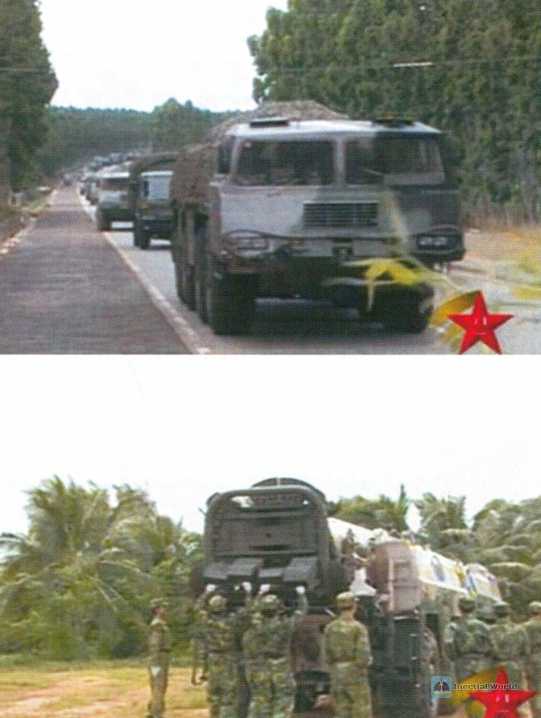
The People’s Liberation Army Daily and other authoritative organizations publicly reported and publicized the Rocket Force’s "Missile Launch Pioneer Battalion"’s practice of strengthening the army. The "Missile Launch Pioneer Battalion" is a launch battalion of a brigade of the Rocket Force. Over the past 20 years since its establishment, the battalion has led officers and soldiers to successfully complete more than 40 major tasks, and has been commended by the entire army and the Rocket Force 48 times, and has won the second-class merit twice and the third-class merit five times. According to relevant reports on it by China National Radio and the Political Work Department of the Rocket Force, in August 2018, the new conventional missile replacement task was first launched in the battalion. Faced with the difficulties of no textbooks, no equipment, and no experience, they selected 32 technical backbones as the "seed team" and went to colleges and factories to learn and train. If there were no textbooks, they would organize their notes into books. They would study the circuits and oil circuits that they did not understand over and over again. In the end, they independently compiled 17 theoretical textbooks and 6 operating procedures for 9 categories of new equipment. Under the guidance of Second Class Sergeant He Under the leadership of backbones such as Xianda, they summarized training methods such as the "three-day rolling training method", and used this as a guide to actively engage in the practice of strengthening the army. With the unremitting efforts of all officers and soldiers of the battalion, at the beginning of 2019, the whole battalion had basically mastered the operation capabilities of the new equipment and successfully completed the joint adjustment and training of the new equipment. On October 1 of that year, the officers and soldiers of the "Missile Launch Pioneer Battalion" drove the new equipment Dongfeng-17, and under the leadership of Deputy Brigade Commander Lu Ercan, passed the Tiananmen Gate Tower and gloriously accepted the inspection of the motherland and the people. The battalion successfully achieved the goals of "two types of battalions" and "one aircraft, two types". All officers and soldiers of the battalion can master both new and old professions and control both new and old equipment, so that the "two sets of swordsmanship" of the Dongfeng-17 and Dongfeng-11 series can be switched at any time and the combat capabilities are seamlessly connected. The "Missile Launch Pioneer Battalion" that has successfully completed its transformation and development is undoubtedly an excellent example worthy of learning. Therefore, based on the advanced experience of the battalion, it is reasonable to speculate that the transformation direction of the Rocket Army’s conventional missile forces is reasonable.
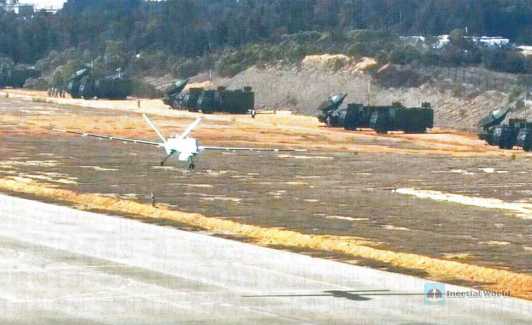
Battle mission
The future People’s Liberation Army’s amphibious delivery and landing combat missions can be roughly divided into two stages: landing operations and island attacks. The former can be further subdivided into three stages: preliminary operations, assembly on board and sea crossing, assault on shore and establishment of landing sites. Among them, the preliminary combat stage requires seizing information control, implementing preliminary comprehensive firepower assaults, seizing air control, Seizing sea control, implementing advance firepower preparation, and implementing advance minesweeping and obstacle removal, new missiles can play an important role in this stage, practicing the new informationized combat thinking of "information and fire as the main battle, force as the auxiliary, information and fire as one, complementary and effective", and avoiding the high-consumption combat caused by the traditional mechanized army’s "force as the main battle" thinking as much as possible. It can coordinate with various military services to carry out system-breaking warfare against the enemy, destroy enemy command institutions, communication facilities, technical weapon bases, support bases, transportation facilities, airports, ports and other key targets, destroy the enemy’s key links,
paralyze the enemy’s combat system, thereby greatly weakening the enemy’s combat capability and quickly achieving combat objectives at a relatively small cost.
In the early integrated firepower assault, the new missiles should be combined with the firepower of various services to suddenly, violently and continuously carry out comprehensive and focused assaults on the enemy’s key targets. In the first assault, unified coordination and careful planning should be carried out to determine the assault method and attack waves to ensure concealment, suddenness, preemptive attack on the enemy and continuous damage. In the subsequent assault, the situation should be analyzed and the overall situation should be coordinated. According to the integrated firepower assault plan, the targets that failed to work in the first assault and the newly discovered targets that are inconvenient for the aviation force to assault should be focused on assaulting the enemy’s air force and naval bases in coordination with the firepower of various services. Preparations should be made for the connection between the early integrated firepower assault and subsequent actions such as seizing air supremacy and seizing sea supremacy, and favorable opportunities should be seized and forces should be used reasonably to ensure the achievement of the integrated firepower assault objectives. In this process, the new tactical and campaign missiles can play a very important role.
In order to seize information dominance, the new missiles should be guided by the basic principles of combining hardware and software, combining offense and defense, and focusing on offense, and coordinated with information reconnaissance, information suppression, information deception, electronic defense and other methods, and combined with the firepower of various services to carry out fire assaults on key targets such as enemy command institutions, communication facilities, support bases and technical weapon bases; in order to seize air dominance, the new missiles should be guided by the basic principles of combining controlling the enemy on the ground with destroying the enemy in the air, and focusing on controlling the enemy on the ground, and coordinated with air interception, air blocking, air resistance and other methods of destroying the enemy in the air, as well as the method of destroying the enemy on the ground, such as behind-the-enemy-line raids, and cooperate with aviation firepower to carry out air assaults on key targets such as enemy airports, command institutions, communication facilities, support bases and technical weapon bases; in order to seize sea dominance, the new missiles should be coordinated with ambush, mobile minelaying, amphibious raids and other methods, and combined with the firepower of various services to carry out joint assaults on enemy ports, command institutions, communication facilities, support bases, technical weapon bases, and naval ship formations, with sea blockades and sea strikes as the main actions.
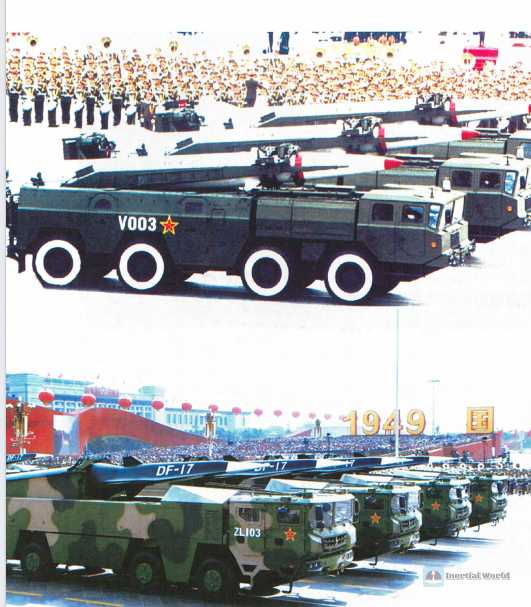
In summary, in the early combat stage of the landing operation, the joint fire assault carried out by various military services using a large number of weapons and equipment including new missiles is enough to greatly weaken the enemy’s combat capability and lay the foundation for our army’s victory. The article of Lieutenant General Wang Hongguang, former deputy commander of the Nanjing Military Region, also confirms this to some extent. He wrote in an article: "Three waves of fire assaults mainly based on artillery missiles, plus three waves of supplementary strikes by aviation firepower, according to computer simulation, should destroy 1/3 of the enemy’s important targets, and suppress other important targets and general targets, making them lose their use function within 48 hours. After that, the reconnaissance and strike integrated drones will monitor from the air and eliminate sporadic resurrection firepower." In another article, he also wrote: "The enemy’s main fighters and warships were mostly destroyed during our fire preparation stage (D-24h), and the rest were basically unable to start Flying and leaving the port can be considered to have lost combat effectiveness. "The importance of the early combat stage in the whole battle to take the lead in the enemy can be seen from this. As one of the main weapons for implementing joint fire assault in this stage, the new missile naturally bears extremely important missions. I believe that the multiple troops equipped with new missiles will hone their skills in the training field, promote the new equipment to accelerate the formation of combat effectiveness in real combat, and make unremitting efforts to achieve the goal of the 100th anniversary of the founding of the army as scheduled.
Conclusion
The new missile is the harbinger of the adjustment of the division of labor between the services, the representative of the new domain and new quality of the army’s combat power, and the new growth pole of combat effectiveness in the transformation and construction of the army. Now, the goal of the 100th anniversary of the founding of the army has reached the critical stage. Facing newer and heavier missions, the multiple army troops equipped with new missiles will live up to their trust and use combat effectiveness, the only fundamental standard, to submit the contemporary answer sheet of the road to strengthening the army with Chinese characteristics to the party and the people.


